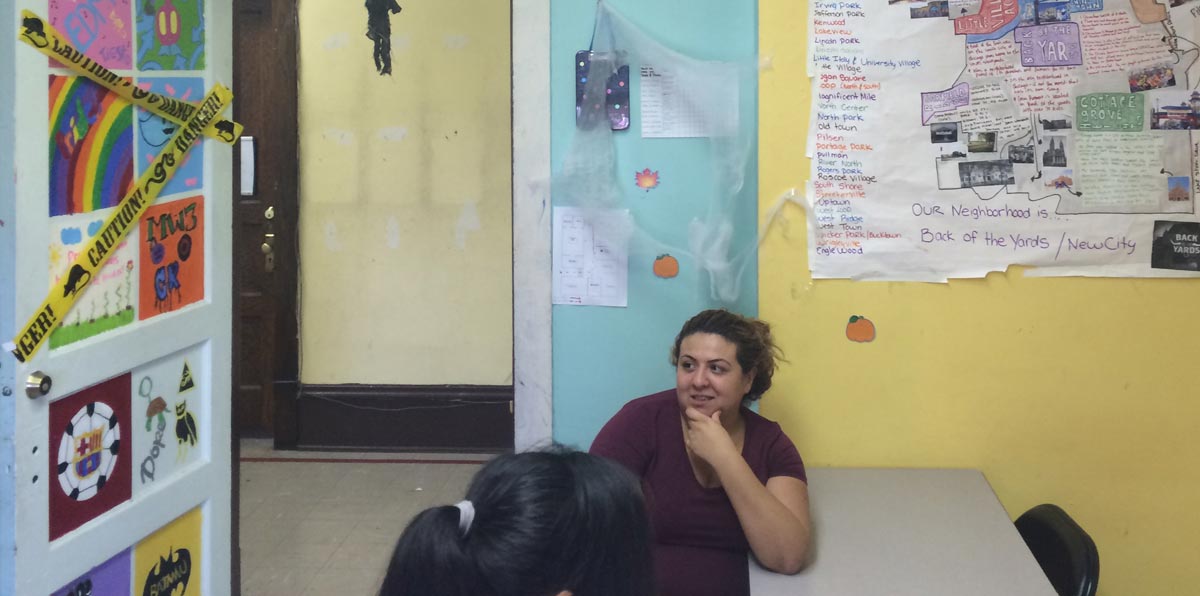By Kelan Lyons
Eleven after-school programs in Chicago have shut down because of a lack of state funding for the Teen REACH program, according to estimates from the advocacy group ACT Now Coalition.
Overall, about 10 percent of the 15,000 students across Illinois who benefit from the program have lost services, a survey completed by the ACT Now (Afterschool for Children and Teens Now) Coalition estimates. Programs that haven’t shut down have been forced to rely on funds from outside donors to keep their doors open through the school year, said Shallie Pittman, youth development associate at ACT Now.
“No one has a contract and therefore no one is offering a complete program,” said Pittman.
Programs funded through Teen REACH —Teen Responsibility, Education, Achievement, Caring and Hope— have not received state money since legislators failed to pass a budget on July 1.
According to the Illinois Department of Human Services website, these programs provide homework help, mentoring services, education on reducing dangerous behavior such as using drugs or alcohol and engaging in violent activities, service learning projects, and recreational sporting activities for young people between six and 17.
Kelley Talbot of ACT Now said after-school programs “provide a safe, structured space for kids when they’re not in school.” Programs can also allow parents to work longer hours and provide more financial stability for their families, since they know their kids are in a safe environment, she added.
Teen REACH money is given to programs that serve low-income students, Pittman said. Programs extend across Illinois, with Chicago locations in neighborhoods such as Englewood, Brighton Park, Logan Square and Kenwood, among others.
‘MORE THAN THE VIOLENCE’
At the Immaculate Heart of Mary Parish in the Back of the Yards, the Holy Cross Youth Program was in danger of closing since it didn’t receive the $120,000 it is due annually from the state, said Sister Angie Kolacinski. Thanks to a donation from the parish finance council, it will remain open through the school year.
The program used to serve 80 kids, but had to cut that to 60 after two staff members returned to college at the end of the summer, which helped the program to avoid firing any staff members. Instructors at Holy Cross work with students from grades 1-12 on their homework, and help students develop life skills between 3 p.m. and 6 p.m. on weekdays. Students come from Seward Academy, Back of the Yards High School, Hedges Elementary, Chavez Elementary Multicultural Academy, Curie High School, and Lara Elementary Academy.
“I think it’s an opportunity and a place to show them there’s more than the violence in this neighborhood and what’s going on,” said Mary Gomez, program supervisor.
Holy Cross/Immaculate Heart, located on Honore Street in an old building that used to be a convent, is a safe space for kids in a neighborhood known for its tumultuous violence. So far in 2015, 90 people have been shot in New City, where the Back of the Yards neighborhood is located, according to the Chicago Tribune’s shooting victims database. In perhaps the neighborhood’s grisliest gunfire in recent weeks, a possible gang-related shooting resulted in the death of a pregnant woman and grandmother, and the injury of an 11-month-old, on September 29, according to dnaInfo.
Kolacinski said that her program’s closure would put kids who otherwise would have been involved in the after-school program at risk of being on the streets when another violent attack occurs.
Gomez echoed her colleague’s commitment to serving their community’s youth.
“To not have this program in the community, I think it would be devastating to our families,” said Gomez.
Rubi Rodriguez, an instructor for high school-aged students in the program, said Teen REACH helped young people see beyond the violence surrounding them by paying for field trips outside the Back of the Yards.
“It helps them explore outside the neighborhood,” said Rodriguez.
Daniel, an eighth-grader at Hedges Elementary, says he likes being at Holy Cross/Immaculate Heart because the teachers help him do his homework. He comes every day after finishing his last period at Hedges, stopping at home to change and eat tacos before coming to Honore Street to do his homework and play outside.
Daniel pauses when asked what he would be doing or where he would be if he weren’t at Immaculate Heart after school. He gets quiet and smiles awkwardly, and drops his voice to a whisper.
“In the streets. Be in gangs,” he says.
Renee Mandeldove worked for the Chicago Area Project in West Haven before it had to stop paying its workers since it didn’t get any Teen REACH funding. Now, she works as a volunteer with her kids at St. Malachy School in West Haven, near the Henry Horner Projects.
“Budget doesn’t get passed, we don’t get paid. But the kids are still there,” Mandeldove said. “This is my life.”
The Chicago Area Project served 160 kids every day by, in Mandeldove’s words, “giving them something to do.” The young people go to senior citizen’s homes, sing in a choir, go on breast cancer walks and pass out food. Normally, the Project would hire six young people and five adults from the community to help coordinate projects, but “all of them have lost their jobs” since funding fell through, Mandeldove said.
She relies on faith that the Chicago Area Project will eventually resume full services.
“I just don’t think God is going to leave our kids in the street like this,” said Mandeldove.
Mandeldove and Gomez work in separate neighborhoods but responded with the same answer when asked what they believe their programs provide for young people.
Both replied: “It gives them hope.”





